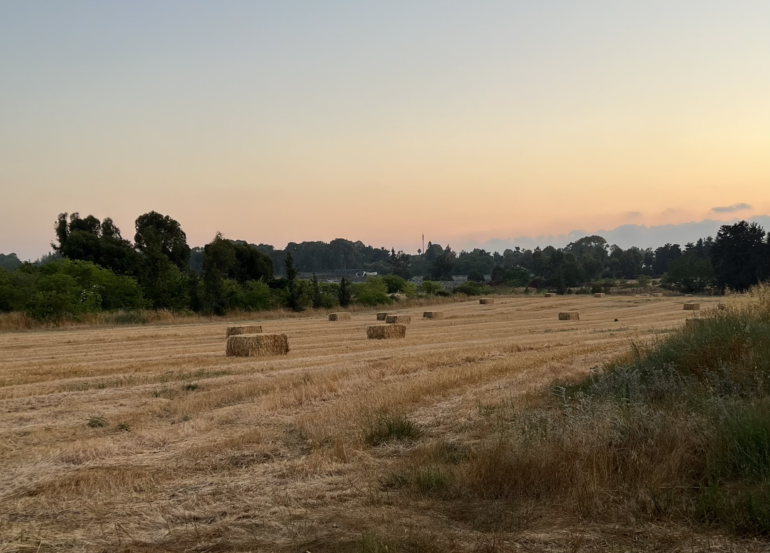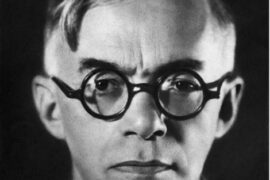Avraham didn’t receive the Torah. While some might assume that the reason for this was that he was born too early, or that he didn’t require it as he already knew and lived it, I’d like to suggest another explanation.
Despite being a very holy and righteous individual, Avraham was not yet a people.
The Torah could only have been received by the Hebrew collective, with instructions for different members of society. We each have our roles and need to work together, reflecting our shared soul, in order to be able to utilize the Torah as an instruction manual for national life. No sole individual can do it.
Shavuot marks an event that took place at a moment when the Hebrew tribes were united as a unit to receive the Torah.
It was not because Moshe was a greater figure than Avraham but because we the children of Israel were capable of being a unified vessel for an instruction manual that actually reflects our truest inner nature.
One national soul, unbroken and united in Oneness, with Dan and Yosef no longer eyeing Shimon and Yehuda with suspicion, or vise versa.
All at peace and respectful that I am you and you are me, our collective neshama unfractured.
In terms of the agricultural roots of the ḥag (festival), and the celebration of Torah at this time of year in Eretz Yisrael, let’s focus on some Israeli tribes relating to Shavuot solely as a harvest festival, in the spirit of A.D. Gordon’s second aliya lineage.
These were the nature-based Jews who came back into solid form in the early 20th Century, engaged in working the land as a part of their spiritual and political endeavors, seeking a land-based equality emphasizing independence.
Kibbutznikim and farmers with a close relationship to the land from the perspective of agriculture and productive labor, tilling soil while meditating on the deeper essence of life, as experienced in their rural Israeli lives.
Ḥag HaKatzir (Festival of the Harvest) and Yom HaBikkurim (Day of the First Fruits) are two older names for Ḥag HaShavuot (Festival of the Weeks). The original ancient roots of Shavuot is a WHEAT festival – not the dairy festival that we see today. Dairy cows may be most productive at this time of year but our Levantine genetic inheritance renders many Jews lactose-intolerant. We are NOT dairy people by nature, it’s simply a habit we picked up in some of our host countries while in exile.
The land of milk and honey was a land of goat’s milk (according to some opinions) or wine (according to others) and silan (date honey). We certainly didn’t consume raw, much less pasteurized or homogenized cow milk. In fact, the only dairy products we consumed traditionally were inoculated and fermented, dramatically lowering the lactose content of the final product as we consumed a little goat and sheep milk cheese.
Shavuot was originally the festival of wheat, not cheesecake. It’s the twin festival of Pesaḥ, or Ḥag HaMatzot.
The first day of Ḥag HaMatzot and Ḥag HaShavuot are bookends on the grain harvests – Ḥag HaMatzot is the start of the barley harvest and Ḥag HaShavuot is the start of the wheat harvest. For some communities, there’s a tradition to eat the last piece of matzah on Shavuot crumbled in milk and honey (or wine and silan), as a reminder that these two festivals are deeply linked.
While Pesaḥ / Ḥag HaMatzot is about leaving Egypt, Shavuot is about settling in our own land as a free civilization, with a cultural inheritance and a deep sense of collective unity and purpose, having just received the Torah.
Ḥag HaShavuot is the time of year we brought the First Fruits of the land to the Temple in Jerusalem to offer first to HaShem, in recognition that nothing is produced without the Creator as our partner.
Sukkot was the harvest festival at the end of the summer, when the wheat sheaths that had been cut around the time of Shavuot were dry, ripe and ready to mill into dry flour. Shavuot was the first cutting of the sheaths, before they were left out in the summer sun to finish the process.
Shavuot can be considered a kind of super Shabbat, as it falls on the seventh week of the Omer period. Like Shabbat being the seventh day of the week, Shavuot is a bread-based holiday for learning Torah.
Shavuot is a perfect time to reflect on our decision to remain in this land. We transformed from nomadic goat-herders / gatherers / smallholders to becoming landed farmers. It’s a huge step, from nomadic to settled life, raising the potential to create a lasting civilization, with the ability to study and create from a stable base, no longer moving from place to place in the desert.
We are an agrarian civilization with a land-based sacred tradition that we honor, remember, and celebrate as a tribal collective in all of our diversity, from the kibbutz children’s rustic parades to the all night Torah study taking place throughout Jerusalem.





